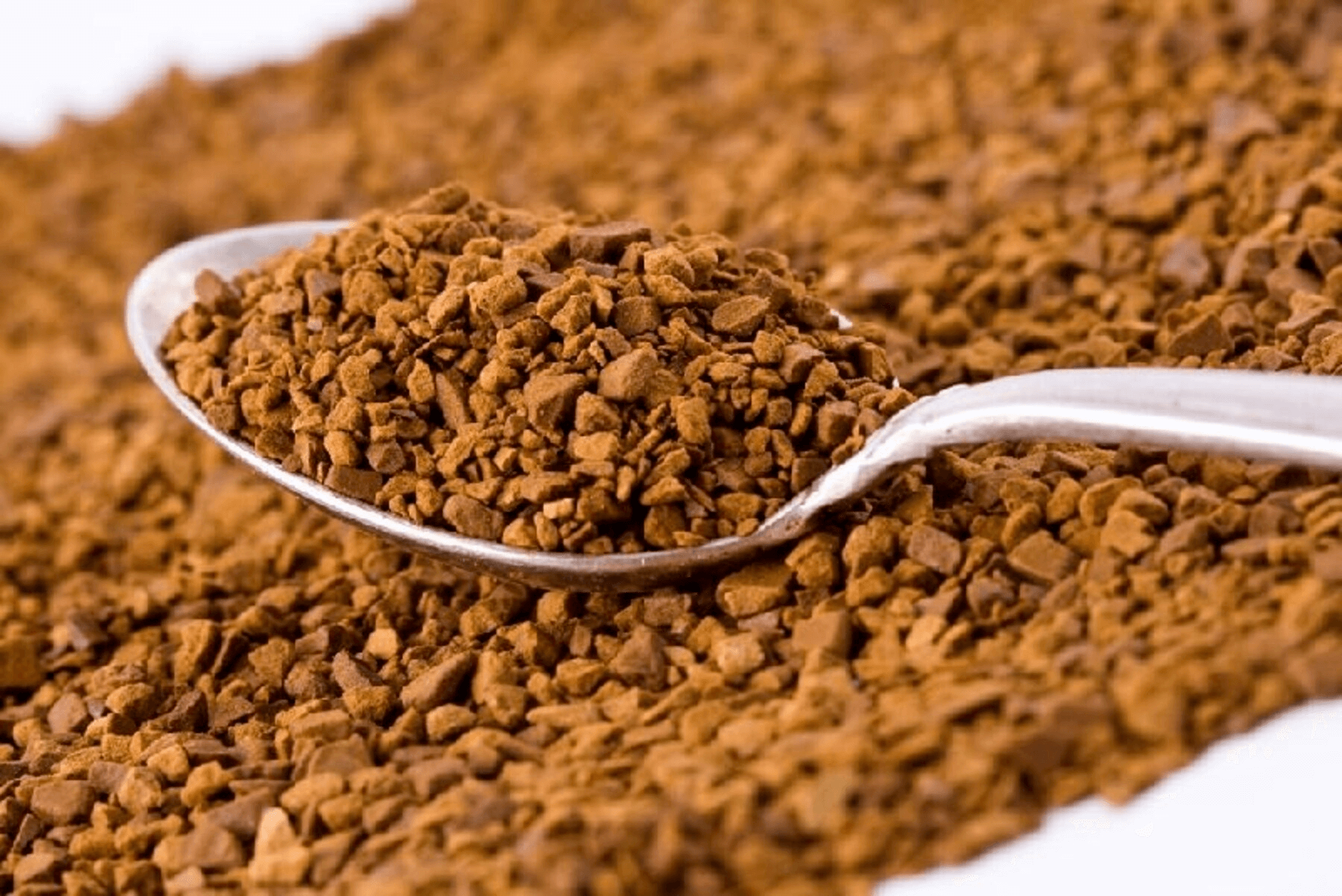How do you begin your new day? Have you ever wondered why you’re always feeling groggy, weighed down by work, deadlines, and the pressures of life? For that reason, caffeine has become an essential part of starting your day. But in our fast-paced, hurried lives, waiting for the slow drip of a coffee maker or going through the steps to get a delicious cup of coffee can be tiring and inconvenient. You’ve turned to the soluble coffees on the market, but your needs aren’t met because the flavor and aroma just aren’t as good as a fresh brew. Even though making a cup of soluble coffee only takes a minute or two?
Soluble coffee is indeed the solution for a busy schedule, and its very name explains the quick, simple, and convenient nature of this type of coffee. But not all soluble coffees are the same. You’ve surely noticed the difference in taste when trying various soluble coffees on the market. And the key to this difference is the production technology. Each different processing method, time, and step will create a type of soluble coffee with its own unique characteristics in both flavor and quality.
To better understand the processing of soluble coffee, this article will clarify the two main technologies used to create it, diving deep into the differences between freeze-dried and agglomerated soluble coffee. Customers will be given an accurate overview of these two types of soluble coffee.
What is soluble coffee?
At its core, soluble coffee is simply brewed coffee that has been dehydrated. The goal of production is to remove virtually all the water from the concentrated coffee extract, leaving only the soluble solids that carry aroma and flavor. This transformation transforms a perishable liquid into a stable, easily transportable product that can be reconstituted in seconds with hot or even cold water.
The overall process involves roasting and grinding the beans, extracting a potent coffee concentrate, and then drying. However, the choice of drying technology is what distinguishes products, shaping everything from flavor intensity to texture to shelf life, and giving rise to the diverse market we know today.

The Story of Freeze Instant Coffee and Agglomerated Instant Coffee
The soluble coffee market is incredibly diverse. Does going shopping and choosing from thousands of soluble coffee brands make you feel overwhelmed with too much information? And yet, finding a product that perfectly suits your taste is no easy task. This explains why, when it comes to coffee, many people tend to stick to a few specific brands, all while still wondering if there might be a better one out there.
To help you get a clearer picture, let’s take a deep dive into the two types of coffee that use the main production technologies shaping the quality of soluble coffee today: freeze-dried and agglomerated. First is freeze instant coffee, which is highly regarded for its ability to preserve flavor, and second is agglomerated instant coffee, which is popular for its production efficiency and convenience.
1. Freeze Instant Coffee
A freeze instant coffee is a premium type of soluble coffee created by freezing pre-brewed coffee, then removing the water through a sublimation process under vacuum pressure. After undergoing sublimation, the coffee retains much more of its original flavor and aroma compared to the normal spray-drying process. The rapid freezing quickly creates coffee crystals that dissolve in hot water, delivering a rich, high-quality coffee drink. The low-temperature drying method almost completely prevents heat degradation of the coffee’s flavor and aroma.

The Freeze Instant Coffee Process
The freeze instant coffee process is the most advanced method for producing soluble coffee. First, it begins with selecting high-quality coffee beans, which are roasted, ground, and extracted into a thick, concentrated coffee liquid. Immediately after, this concentrate is flash-frozen at a very low temperature, maintained around -30°C.
The second crucial stage takes place when the frozen coffee block is placed in a vacuum chamber. In this extremely low-pressure environment, “sublimation” occurs, meaning the ice turns directly from a solid into a gas without ever melting into water. After this step, the water is almost completely removed from the original coffee block. Finally, as the temperature is slowly raised, the solids are completely dried, resulting in the final product: crisp, dry coffee crystals.
It is thanks to this complex and low-heat process that a freeze instant coffee is considered the finest type. It retains nearly the entire delicate flavor and aroma of the original coffee beans, is stable in quality, can be stored for a very long time, and is still convenient and quick to use.
Benefits of Freeze Instant Coffee:
The low-temperature process preserves the delicate flavors and aromas of the original coffee beans more effectively than high-temperature methods. This is simply because high temperatures cause water to evaporate, carrying with it a portion of the original aroma of the coffee beans. That is why the taste of a freeze instant coffee is closest to that of fresh, conventionally brewed coffee.
The product from the freeze-drying process is more stable than that from conventional methods, offering a long shelf life while consistently maintaining its quality.
2. Agglomerated Instant Coffee
An agglomerated instant coffee is what you get when fine, spray-dried coffee powder is transformed into larger, more porous granules that dissolve quickly and evenly. This extra step is designed to improve the coffee’s texture and how well it dissolves. At the same time, it keeps production costs down because the process is simpler and uses less advanced technology compared to the freeze instant coffee method. The final result of all these steps is that convenient soluble coffee with a smooth flavor and appealing look that we’re all used to seeing on supermarket shelves.

The Agglomeration Process
Spray-drying is a popular method for making soluble coffee that focuses on speed and efficiency. Just like the freeze instant coffee process, it also starts with roasting and grinding high-quality coffee beans, then adding water to create a concentrated coffee liquid. To increase efficiency, this liquid is often concentrated even more by gently evaporating some of the water. However, this increase in efficiency comes at a cost, as some of the coffee’s flavor is lost along with the water once this step is done.
After that, the concentrated coffee liquid is sprayed as a fine mist into a stream of hot air. The sudden heat makes the water evaporate almost instantly, leaving behind a very fine coffee powder. However, to make it easier for people to use, this powder goes through an “agglomeration” step. The powder is lightly moistened with steam, causing the tiny particles to bond together and create larger, more porous coffee granules that dissolve more easily. Finally, as a last step, the granules are gently dried one more time to make sure they’re completely dry and then cooled down to stabilize the flavor before being packaged. The result is a porous, irregularly shaped granule that dissolves well in water.
Benefits of Agglomerated Instant Coffee
Because the granules are porous and light, they dissolve incredibly well in water. After just a couple of stirs, the coffee powder will completely disappear, and it’s unlikely to leave any residue behind.
Thanks to the agglomeration step, the granules don’t clump easily, which makes them easy to store. They also have a pleasant flavor that’s perfect for those who prefer a gentler coffee aroma.
The differences between Freeze instant coffee and Agglomerated instant coffee
So, which type of coffee should you choose? The final answer really comes down to your own taste and budget. If you’re still undecided between freeze-dried instant coffee and agglomerated instant coffee, the brief comparison table below will help you find the most suitable choice.
| Criterion | Freeze Instant Coffee | Agglomerated Instant Coffee |
| Flavor | Rich and full-bodied, preserving almost the entire original flavor of the coffee after extraction.
Advantages: More complex, robust taste. Disadvantages: Dissolves less easily and may not be ideal for iced coffee unless stirred thoroughly. |
Lighter, as it is a blend of spray-dried and freeze-dried coffee.
Advantages: Dissolves more readily in water and is often preferred for making iced coffee. Disadvantages: Flavor is not as rich or intense as pure freeze-dried coffee. |
| Texture / Appearance | Large, porous, crystalline granules with high porosity. | Granulated clumps (“agglomerates”) formed from fine powder, often with an irregular shape. |
| Cost | Around US $8–10/kg for standard export-grade Vietnamese blends; specialty Robusta or Arabica blends can reach US $20–25/kg depending on origin and certification. | Typically, more affordable, roughly US $6–8/kg for mid-range agglomerated coffee in bulk. |
| Retail Price | Small jars (100–200 g) often range from 100,000–250,000 VND or more, depending on brand and import status. | More accessible and budget-friendly, usually priced lower than freeze-dried products of the same weight. |
Which Soluble Coffee is suitable for you?
Ultimately, it comes down to the most important part: the choice depends on what you’re really looking for. If you’re a true coffee connoisseur who always puts the flavor experience first and is willing to pay for a soluble product with a quality closest to a slow-brewed coffee, then freeze instant coffee is the perfect answer. On the other hand, if your need is simply for a quick cup of coffee to get you alert enough to start a busy new day, agglomerated instant coffee completely meets that demand at a reasonable price that is more than worth it. The soluble coffee market is always evolving, with constant improvements in quality. But no matter how much it changes or how different it becomes, quality and customer trust will always be what allows a coffee product to survive in a volatile market.
Health Advantages of Freeze-Dried Instant Coffee
Thanks to advanced processing methods, freeze-dried coffee preserves the natural quality and flavor of the beans. Research highlights several notable health benefits:
Supports weight management and skin health
Caffeine can gently boost metabolism, helping the body burn roughly 100–200 calories per day. The beverage is also rich in antioxidants, which combat free radicals, improve skin elasticity, and may minimize the appearance of fine lines. Moderate daily intake is recommended to avoid overstimulation.
Helps regulate blood sugar
Freeze-dried instant coffee provides trace minerals such as magnesium and chromium, which have been linked to improved insulin sensitivity and a lower risk of type 2 diabetes.
Promotes liver wellness
Regular, moderate consumption has been associated with stable liver enzyme levels, aiding in the maintenance of normal liver function.
Potential longevity benefits
Habitual coffee drinkers often show reduced rates of cardiovascular disease, stroke, and certain liver or kidney disorders, which may contribute to a longer life expectancy.
Important considerations
Always seek medical advice regarding your caffeine intake. Individuals with conditions like hypertension, heart disease, or chronic insomnia should exercise caution, as caffeine can aggravate these issues
Note: The U.S. Food and Drug Administration (FDA) advises limiting caffeine to no more than 400 mg per day for healthy adults.
FAQ: Frequently Asked Questions About Soluble Coffee
Q: Why is freeze-dried instant coffee more expensive?
A: Freeze-dried instant coffee is more expensive because the freeze-drying process is complex, time-consuming, and energy-intensive compared to spray-drying.
Q: Is agglomerated instant coffee a lower-quality product?
A: Not necessarily. While the spray-drying process can result in some flavor loss, agglomerated instant coffee is a high-quality product in its own right, designed for optimal cost-effectiveness and convenience, catering to the needs of a broad consumer base.
Q: Does soluble coffee contain much more caffeine than regular roasted coffee?
A: Not really soluble coffee (instant coffee) usually has a bit less caffeine per cup than regular brewed coffee from ground beans. Instant coffee is made from brewed coffee that’s dried into powder or granules. The caffeine level depends on how much of that powder you add, but most single-serve packets are formulated to be a bit weaker than a typical brewed cup.
